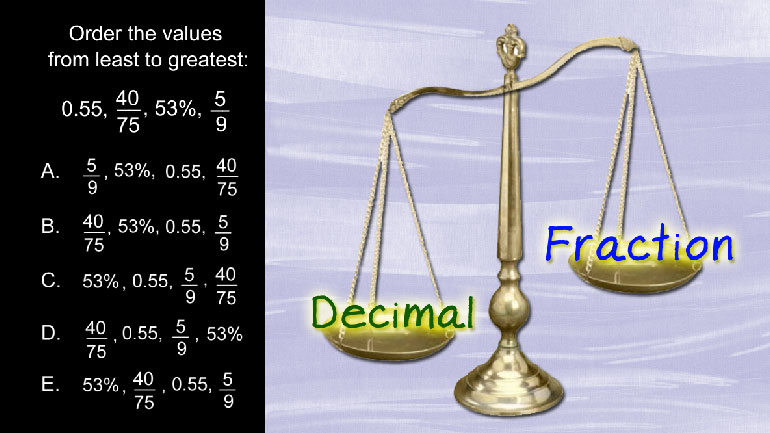ShmoopTube
Where Monty Python meets your 10th grade teacher.
Search Thousands of Shmoop Videos
Pre-Algebra: Adding and Subtracting Fractions and Decimals 6173 Views
Share It!
Description:
Worried about adding and subtracting fractions? Never fear. It's so easy that it will only take up a fraction of your time: just use multiplication to make the denominators the same. Oh, and make sure to do whatever you did to the denominator to the numerator, too. Our fraction friends deserve equal treatment.
Transcript
- 00:04
Adding & Subtracting Fractions, a la Shmoop.
- 00:07
Have you ever known someone who wants to be just like you? [Girl hugging her sister]
- 00:11
Maybe the kid who lives next door, or your little kid brother.
- 00:14
Or your stalker? [man stalking another man with binoculars]
- 00:15
Maybe they noticed your sweet new plaid pants… … and decided to wear the same pair.
Full Transcript
- 00:20
They do whatever they can to be similar… …because they want to be friends. [man looking through binoculars at men playing golf]
- 00:24
In a creepy sort of way.
- 00:26
Adding fractions sort of works the same way. If the denominator is different…
- 00:30
…one - or both - of the fractions attempt to have the same bottom.
- 00:35
Take 2/3 plus 1/6, for instance.
- 00:37
In order to add the fractions, we need to make the denominators the same. [arrow points to denominators of fractions]
- 00:42
We do this by multiplying the top and bottom of the fraction by the same number.
- 00:45
In this case, we take two-halves times two-thirds to get four-sixths.
- 00:52
Remember… two-halves, or 2 divided by 2, equals 1… [fraction of 2 over 2 equals 1]
- 00:56
… so we're actually just multiplying by 1.
- 00:58
Now the denominators are the same…
- 01:00
… so we can add them. We get 4/6 plus 1/6 equals 5/6.
- 01:04
It works for subtraction, too.
- 01:07
Subtracting, we get 4/6 minus 1/6 equals 3/6… and of course we can reduce it to get ½.
- 01:14
Sometimes both of the denominators need to be changed. [man looking worried at changing nappies]
- 01:19
Like 1/8 plus 1/3. What's the common denominator there?
- 01:22
You have to multiply them. 3 times 8 is 24.
- 01:25
So we need to multiple 3 up here and get 3/24 and 1/3 you need to multiply by 8/8...
- 01:33
and you get 8/24.
- 01:35
That gives us 3/24 plus 8/24. Add the 3 and the 8, you get 11/24. Voila!
- 01:42
It's annoying when someone is copying you all the time… [A couple arguing]
- 01:44
… but hey, imitation is the sincerest form of flattery.
Up Next
Related Videos
Who wants to be a millionaire? In this video, learn about compound interest, interest rates, and the compound interest formula. You'll be buying th...
ACT Math: Pre-Algebra Drill 5, Problem 2. If a and b are prime numbers, how many factors does ab have?
This video explains how to convert between decimals, percents, and fractions. All three of these languages are just different ways of showing parts...




